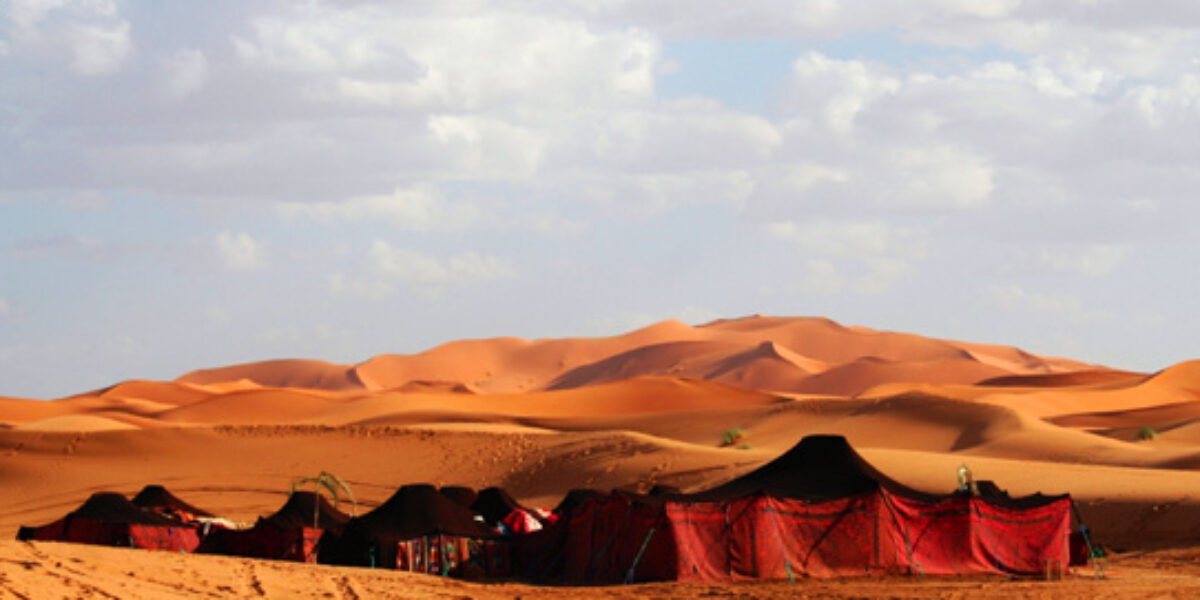Before the King Solomon built the temple, worship in Israel revolved around the Sacred Tent, or Tabernacle. Read about the origin of this tent and its role in the Israelites’ worship practices.
When God gave Moses the Law at Mount Sinai, God also gave him instructions for making a sacred tent of meeting, also known as the “tabernacle” (Exodus 25:1–27:21; 36:1–38:31). This sacred tent was to be Israel’s place of worship, where the people would bring gifts and sacrifices to God. The people could gather in the first area of the tent, but only the priests could go beyond the first curtain into the holy place. There the priests tended the lampstand, which symbolized the light of God’s presence. They made sure that fresh holy bread was kept on the table as a reminder of the life-giving bread God gave the Israelite people as they traveled through the desert (Exodus 16:1-26; Numbers 11:4-9). And the priests burned incense on a golden altar. The incense smoke represented the prayers that went up to God.
A second curtain separated the holy place from an inner area called “the most holy place.” Only the high priest could enter the most holy place once a year to offer a blood sacrifice for the sins of all the people (Leviticus 16; Hebrews 9:7). The gold-covered sacred chest (ark of the covenant) was kept in the most holy place. In the chest were three important things: a gold jar filled with manna, Aaron’s walking stick (Numbers 17:1-11), and the Ten Commandments written on flat stones. On top of the sacred box were two winged creatures, or “cherubim.” The lid of the sacred chest between these creatures was called “the place of mercy” and represented God’s throne on earth (Exodus 25:8; 2 Kings 19:14-15; Isaiah 6:1-8).
The original tent was simple, made of cloth and animal skins. It was small enough that Moses could set it up by himself, which he did outside the camp as the people of Israel moved from place to place on the way to the promised land (Exodus 33:7-11). At Shiloh (1 Samuel 1:1-4) the old tent was probably replaced by a more permanent one, and the old equipment (chest, lampstand, table) was put in the new tent.
Years later King David moved the central place of worship to Jerusalem into a new tent, which housed the chest and all the priestly equipment (2 Samuel 6:1-9). This tent was replaced by the permanent temple that David’s son Solomon built and dedicated about 945 B.C. (1 Kings 5:16–38; 7:13–8:66).
The sacred tent and, later, the temple in Jerusalem were visible symbols of God’s presence among the people of Israel. They also were the center of Israel’s worship life and system of holy sacrifices. These were part of what the writer of Hebrews calls the “first agreement” (Hebrews 8:7) or “first promise” (Hebrews 9:1) that God made with his people. But according to Hebrews, God made a new agreement based on the work and sacrifice of Jesus Christ, the true high priest. Jesus did not have to enter the sacred tent to offer sacrifices for sin. Instead, he went directly into God’s presence in heaven to offer his own blood once and for all to take away sin (Hebrews 9:11-28).




